Easter, known as Pasqua in Italy, stands as a cornerstone of the nation’s festive calendar alongside Christmas. Think of it as a mosaic of traditions, flavours, and spirituality, culminating in joyous celebrations, with schools closing their doors and families eagerly anticipating the reunions that await them.
Insieme al Natale, Pasqua è la festa più importante del calendario italiano, un vero e proprio mosaico di tradizioni, sapori e spiritualità che danno vita a bellissime celebrazioni. Le scuole chiudono e le famiglie si preparano per riunirsi e festeggiare insieme.
You might have heard the famous Italian saying, Natale con i tuoi, Pasqua con chi vuoi (Christmas with your family, Easter with whomever you want). Well, in reality, Easter remains a big family affair. Those studying or living abroad travel back home for the Easter break and big lunches are organised, bringing together relatives we only catch up with during mandatory holiday gatherings.
Sì perché avrete certamente sentito il celebre detto Natale con i tuoi, Pasqua con chi vuoi, ma la realtà è che Pasqua è anch’essa un’occasione importante per condividere momenti in famiglia. Chi studia o lavora lontano torna a casa per le vacanze, e si organizzano grandi tavolate, riunendo parenti che spesso si vedono solamente durante le feste comandate.
So, curious to learn more about how Italy celebrates Easter? Let’s dive into it!
Curiosi di saperne di più su come si festeggia la Pasqua in Italia? Scopriamolo insieme!
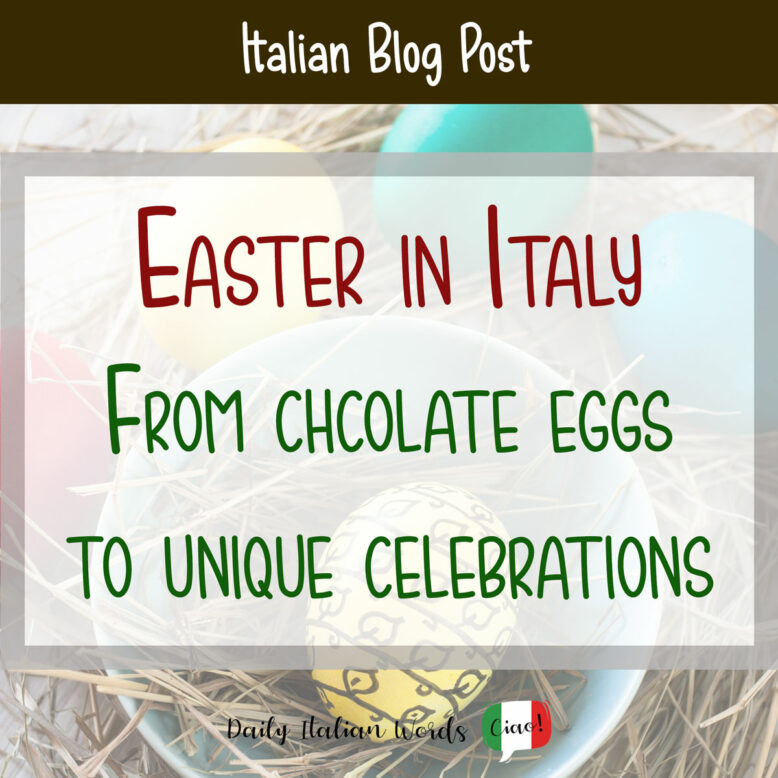
Italy’s Holy Week rituals
I riti della Settimana Santa in Italia
During Holy Week, many cities and towns throughout Italy stage events steeped in profound faith and devotion. One of the most significant days is Venerdì Santo (Good Friday), commemorating the suffering and crucifixion of Christ. Streets transform into living theatres that pulsate with processions and reenactments tracing their origins back centuries. But despite its deep cultural and religious importance, Good Friday is not an official public holiday in Italy, so many carry on with their regular daily routines and work obligations.
Durante la Settimana Santa, molte città e paesi in tutta Italia mettono in scena eventi intrisi di profonda fede e devozione. Uno dei momenti più significativi è il Venerdì Santo, dedicato al ricordo della passione e della crocifissione di Gesù. In questa giornata, le strade si trasformano in veri e propri teatri all’aperto, con processioni e rievocazioni che risalgono ai secoli passati. Nonostante la sua importanza religiosa e culturale, il Venerdì Santo non è considerato un giorno festivo, quindi molti continuano le proprie attività quotidiane e impegni lavorativi.
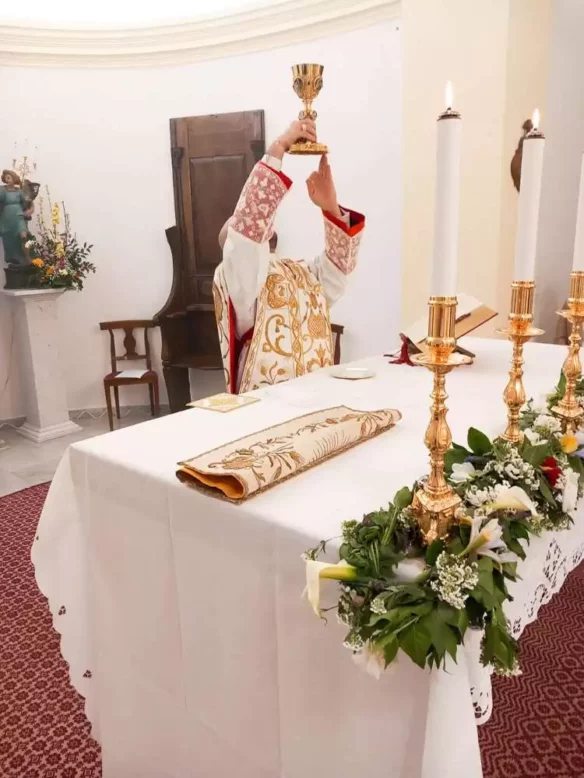
Such events can be deeply moving, especially in southern regions. Take Enna for example, where the hooded members of the local confraternities march through the streets carrying the statues of Christ and the Virgin of Our Sorrow to the sound of funeral marches. Similarly, in Taranto, hooded devotees barefoot called Perdoni bear the crown of thorns on their heads, partaking in a marathon procession lasting several hours.
Questi eventi possono essere profondamente toccanti, soprattutto nel sud Italia. Ad esempio, a Enna, i membri incappucciati delle confraternite sfilano per le strade portando le statue di Cristo e della Vergine Addolorata, accompagnati da marce funebri. Allo stesso modo, a Taranto, devoti incappucciati chiamati Perdoni, prendono parte a una processione che dura diverse ore, camminando a piedi nudi e indossando una corona di spine.
Another town that stands out for the uniqueness of its rituals is Romagnano Sesia, in Piedmont, where odd years see locals turning into actors to stage Christ’s Passion through the village. And then there’s Campobasso, where a group of 100 musicians and a choir of 700 people, all dressed strictly in black, parade through the streets of the historic center on Good Friday, performing the poignant Teco vorrei o Signore.
Altre città che si distinguono per l’unicità dei loro rituali includono Romagnano Sesia, in Piemonte, dove negli anni dispari gli abitanti si trasformano in attori per rivivere la Passione di Cristo, e Campobasso, dove un gruppo di cento musicisti e un coro di settecento persone, tutti rigorosamente vestiti di nero, sfilano per le vie del centro storico il Venerdì Santo eseguendo lo struggente Teco vorrei o Signore.
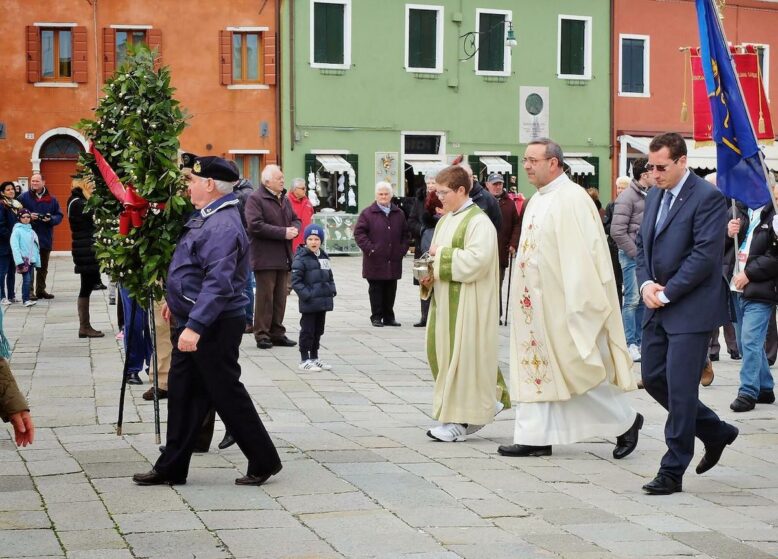
The chocolate Easter eggs
Le uova di cioccolato
Chocolate eggs are an essential symbol of Easter in Italy. While the Easter egg tradition is not uniquely Italian, the country surely elevates it to unparalleled heights of creativity and artisanal mastery.
Le uova di cioccolato sono uno dei simboli più importanti della Pasqua in Italia. Una tradizione che, sebbene non esclusiva del Paese, qui raggiunge alti livelli di creatività e maestria artigianale.

As soon as Carnival (Carnevale) ends, supermarkets across the country transform into wonderlands of chocolate, flooding their aisles with eggs of all sizes. Wrapped in dazzling cellophane paper, these eggs aren’t just treats – they’re treasure troves of excitement! Yep, because they are hollow and contain gifts! Sure, some might contain lame trinkets, but modern packaging drops hints, teasing the hidden delights within, whether it’s tailored goodies for boys or girls or even fancy treats from top brands.
Non appena finisce il Carnevale, gli scaffali dei supermercati si riempiono di uova di cioccolato di tutte le dimensioni. Avvolte in fogli di coloratissima carta metallizzata, queste uova non sono solo golosità da mangiare, ma regalano l’emozione della sorpresa, poiché il loro guscio vuoto nasconde piccoli tesori. Sebbene spesso si tratta per lo più di modesti ninnoli, oggigiorno la confezione stessa svela indizi, anticipando il contenuto, che spazia da sorprese mirate per bambini o bambine a piccole sorprese formate da noti marchi.
And then there are bakeries and pastry shops, whose windows become art galleries of exquisite artisanal eggs. Each one is such a masterpiece of craftsmanship that it’s almost a crime to break them, but in the end you’ll surrender to the irresistible urge to devour all that chocolatey goodness!
Le vetrine di pasticcerie e panetterie, invece, mettono in mostra uova artigianali così belle che quasi dispiace romperle… ma alla fine prevale la voglia di mangiare tutto quel cioccolato!
Come Easter Sunday, these eggs are exchanged among friends and family. While they are primarily meant for children, adults are in on the action too, eagerly awaiting their turn to crack open an egg and revel in the surprise within. Don’t forget: the bigger and more extravagant the egg, the greater the excitement!
Ci si scambia le uova la Domenica di Pasqua e, sebbene siano tradizionalmente destinate ai più piccoli, anche gli adulti partecipano con entusiasmo, aspettando il loro turno per rompere l’uovo e scoprire il suo contenuto. La regola è sempre la stessa: più grande e colorato è l’uovo, maggiore è l’emozione!
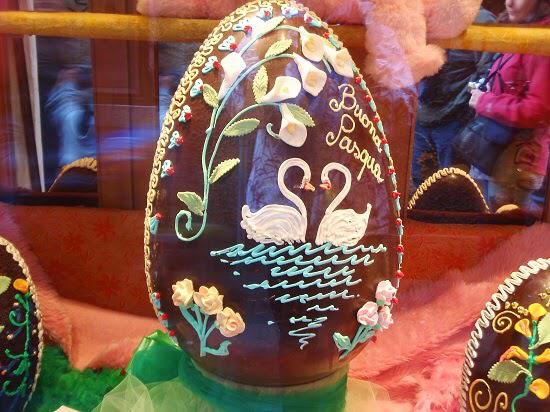
To give you an idea of our obsession with Easter eggs, let’s rewind to 2018 when the town of Asiago, in the Veneto region, created the world’s largest chocolate egg, tipping the scales at a jaw-dropping 7300 kilograms! It was a spectacle of epic proportions, taking center stage in the main piazza for the entire community to enjoy.
Un esempio memorabile della passione italiana per le uova di Pasqua risale al 2018, quando la città di Asiago, in Veneto, realizzò l’uovo di cioccolato più grande del mondo, con un peso di ben 7300 chili. Fu uno spettacolo epico, posto al centro della piazza principale per l’intera comunità.
Colomba, the classic treat of Easter in Italy
La Colomba, il classico dolce della Pasqua in Italia
The other superstar of Easter in Italy is the Colomba. Seriously, no Italian family’s Easter feast is complete without a generous slice of this dove-shaped cake and a glass of chilled bubbly spumante.
L’altra star indiscussa della Pasqua italiana è la Colomba. Nessun pranzo pasquale può dirsi tale senza una bella fetta di colomba accompagnata da un fresco bicchiere di spumante.
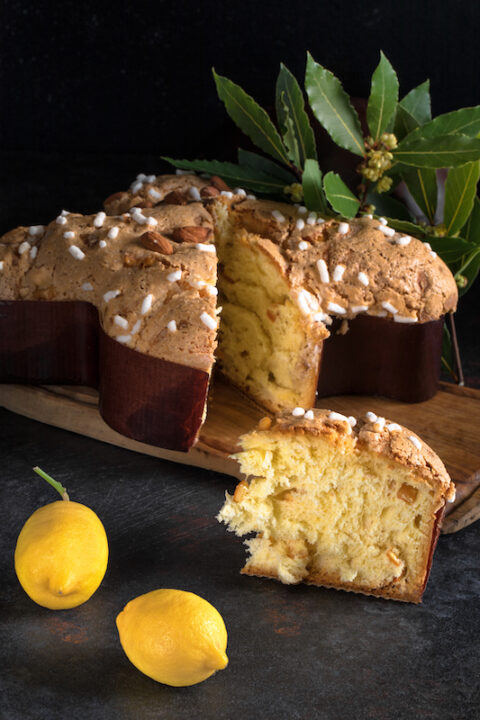
Now, let’s talk origin stories. Forget ancient recipes passed down from generations. Nope, apparently the Colomba’s tale is a very commercial one, born from a brilliant marketing mind! Back in the 1930s, the Milanese brand Motta created this cake as a clever solution to repurpose the machinery employed for crafting Panettone, so they could capitalise on Easter festivities without the need to wait until the following Christmas to use such tools. Their plan worked, forever changing the Easter dessert game!
Ma veniamo alle sue origini. Dimenticate le antiche ricette tramandate di generazione in generazione, a quanto pare la nascita della Colomba fu semplicemente il frutto di una brillante operazione di marketing. Negli anni ’30, il brand milanese Motta creò questo dolce per riutilizzare le macchine impiegate nella produzione del Panettone. Una mossa che gli avrebbe permesso di sfruttare appieno le festività pasquali senza dover aspettare fino al Natale successivo per riutilizzare tali attrezzature. Il piano funzionò, cambiando per sempre il panorama dei dolci pasquali!
Unlike its winter cousin, Colomba typically contains only candied orange peel, no raisins, and it’s topped with crunchy almonds and sugary pearls, though, nowadays you can find it in all flavours and variations. But no matter how it’s dressed up, that iconic dove shape remains.
Rispetto alla sua controparte invernale, la Colomba solitamente contiene solo scorza d’arancia candita, niente uvetta, ed è ricoperta con mandorle croccanti e perle di zucchero. Sebbene oggi si possa trovare in tantissime varianti, la sua forma iconica rimane inalterata.
The Italian Easter lunch
Il tradizionale pranzo pasquale
Much like Christmas, Easter in Italy brings forth a tapestry of iconic dishes, each steeped in tradition and regionalism. Alongside the ever present pasta al forno, at the heart of Easter tables across Italy lies the lamb, prepared in a myriad of ways, whether it’s oven-baked, simmered into a hearty stew, or crisply breaded and fried. Despite controversies surrounding its consumption, it takes centre stage, embodying themes of sacrifice, purity, and innocence deeply rooted in Christian symbolism.
Proprio come il Natale, Pasqua in Italia porta con sé un ricco assortimento di piatti iconici, che spesso variano da regione a regione. Accanto alla sempre presente pasta al forno, l’agnello occupa un posto d’onore sulle tavole italiane, declinato in molteplici varianti: arrosto, in spezzatino o impanato e fritto. Nonostante i tanti dibattiti legati al suo consumo, resta un simbolo della Pasqua italiana, legato ai concetti di sacrificio, purezza e innocenza radicati nel simbolismo cristiano.
Among the regional specialties, there’s the Liguria’s Torta Pasqualina, a savoury pie from Liguria made with the 33 layers symbolising the years of Christ’s life, and Tuscany’s Ciaccia, a soft focaccia made with cheese. Naples presents its masterpiece, the Casatiello, a savoury pie bursting with the robust flavours of cured meats and cheeses, while Sardinia offers the sweet indulgence of Pardula, made with ricotta cheese, lemon, and saffron.
Tra le specialità regionali, spiccano la Torta Pasqualina, una torta salata ligure composta da 33 strati che simboleggiano gli anni della vita di Cristo, e la Ciaccia toscana, una focaccia morbida arricchita di formaggio. Napoli presenta il suo capolavoro, il Casatiello, una torta salata ripiena di salumi e formaggi, mentre in Sardegna troviamo la deliziosa Pardula a base di ricotta, limone e zafferano.

Another Easter tradition, prevalent in southern Italy, is the art of decorated bread. Infused with delicate hints of citrus, this slightly sweet bread is meticulously braided and adorned with eggs, transforming into edible works of art. Known as Coccoi pintau in Sardinia and Cuddura cu l’ova in Sicily, these intricately decorated loaves not only are delicious to eat but also serve as exquisite Easter gifts.
Un’altra tradizione pasquale, diffusa soprattutto nel sud Italia, riguarda l’arte del pane decorato. Si tratta di un pane leggermente dolce, ricco di note agrumate, che viene intrecciato e decorato con uova, dando vita ad autentiche opere d’arte commestibili. In Sardegna è conosciuto come Coccoi pintau, mentre in Sicilia è chiamato Cuddura cu l’ova in Sicilia. Non è solo delizioso da gustare, ma è anche un perfetto regalo di Pasqua.
Unique Easter Day celebrations
Le celebrazioni del giorno di Pasqua
Easter Day in Italy is not just about dove-shaped cakes and chocolate treats; it’s also a time of captivating celebrations that add a unique flair to this joyous occasion. One of the most famous events is the Scoppio del Carro (Explosion of the Cart) in Florence, where an ancient cart loaded with fireworks parades through the streets. Then, at 11am, it stops in front of the Cathedral, where a mechanical dove, symbol of peace, ignite the pyrotechnic display in a burst of colours.
La Pasqua in Italia non riguarda solo colombe e uova di cioccolato; è anche l’occasione di partecipare a riti ed eventi unici che rendono questa festività davvero speciale. Uno dei più famosi è lo Scoppio del Carro a Firenze, dove un antico carro carico di fuochi d’artificio sfila per le strade della città. Poi, alle 11 in punto, si ferma davanti alla Cattedrale, dove una colomba meccanica, simbolo di pace, accende lo spettacolo pirotecnico in un’esplosione di colori.
But that’s not all. In the Sicilian town of Prizzi, there’s the Ballo dei Diavoli (Dance of the Devils), with actors dressed as devils, along with Death herself, roaming the streets on a mission to snatch souls for Hell and thwart the gathering of the Virgin Mary and the Resurrected Christ, but angels intervene and “kill” them. Meanwhile, in Sulmona, the medieval tradition of La Madonna che Scappa (the Running Madonna) takes center stage reenacting the Virgin Mary’s spirited dash to embrace her resurrected son, Jesus, in the central square.
Ma le sorprese non finiscono qui. Nella città siciliana di Prizzi ha luogo il suggestivo Ballo dei Diavoli, dove attori vestiti da demoni, accompagnati dalla figura della Morte, si aggirano per le vie del borgo con l’intento di condurre anime all’Inferno e impedire l’incontro tra la Vergine Maria e il Cristo Risorto, ma vengono sconfitti dagli angeli. A Sulmona, invece, rivive la tradizione medievale della Madonna che Scappa, con una vivace rievocazione della corsa della Vergine Maria per abbracciare il suo figlio risorto, Gesù, nella piazza centrale.
And let’s not forget Bormio, where Easter is marked by a parade of Pasquali. These are elaborately decorated floats adorned with religious motifs, proudly carried through the streets by locals dressed in traditional attire.
E non possiamo dimenticare Bormio, dove la domenica di Pasqua si svolge la grande parata dei Pasquali, delle portantine decorate a tema religioso, portate in spalla per le strade dai residenti vestiti con abiti tradizionali.
The Pasquetta picnic
Il picnic di Pasquetta
Among the cherished Easter traditions in Italy, there’s Pasquetta. Translating to little Easter, it marks Easter Monday in Italy. Traditionally, it’s a day for gite fuori porta (day trips away from the city) and an opportunity to enjoy the outdoors with family and friends ones amidst the blossoming spring. Whether it’s lounging on sandy beaches, exploring scenic countryside, or strolling through charming parks, nature is the backdrop for this special day.
Tra le tradizioni pasquali più amate in Italia c’è la Pasquetta, nota anche come Lunedì dell’Angelo. Questo giorno è tradizionalmente dedicato alle gite fuori porta e scampagnate in compagnia di amici e familiari, approfittando dei primi tepori primaverili. Che si scelga di rilassarsi su spiagge dorare, esplorare panorami mozzafiato o passeggiare in incantevoli parchi, la natura è lo scenario prediletto per celebrare questa giornata.
For those who cherish folklore and tradition, villages across Italy come alive with unique celebrations. From the exhilarating Ruzzolone cheese wheel race in the Umbrian town of Panicale to the delectable Sagra della Pié Fritta (a variant of the classic Piadina Romagnola) in Fontanelice, near Bologna, and the irresistible Sagra del Torrone in Tonara, Sardinia, there’s something for everyone.
Per gli amanti del folklore e delle tradizioni, molti paesi in tutta Italia si animano con festività uniche. Dal Ruzzolone, una divertente gara a suon di forme di formaggio nel suggestivo borgo umbro di Panicale, alla Sagra della Pié Fritta (una variante della classica piadina romagnola) a Fontanelice, vicino a Bologna, e la deliziosa Sagra del Torrone a Tonara, in Sardegna, ce n’è davvero per tutti i gusti.
Food for Pasquetta usually means a picnic with leftovers from the Easter lunch, plus an array of cold dishes ranging from succulent panini (sandwiches) stuffed with cured meats and cheeses to the unmissable insalata di riso (rice salads) or pasta fredda (pasta salad). Of course, remnants of chocolate eggs and colomba cakes round off the meal. Others opt for barbecues with grilled meat and veggies in their friends’ gardens. And if the weather is inclement, a lunch in an agriturismo is always a popular backup choice, where they usually serve fixed lunch menu of local specialties.
Quanto al cibo, Pasquetta è sinonimo di picnic, con cesti ricolmi di avanzi del pranzo di Pasqua e un’ampia selezione di piatti freddi che spaziano dai deliziosi panini farciti con salumi e formaggi alle classiche insalate di riso o di pasta. Naturalmente, non possono mancare colomba e cioccolato per completare il pasto. Alcuni preferiscono invece organizzare barbecue con carne e verdure alla griglia nel giardino di amici. E se il tempo non dovesse essere clemente, un pranzo in un agriturismo rappresenta sempre una valida alternativa, con la possibilità di gustare un menu fisso con specialità locali.

Valentina Nicastro is a travel writer in love with her home country, Italy. Having travelled widely around the globe, she realised there was more to explore closer to home and decided to put the passport aside for a while. When she is not immersed in documenting Italy, you’ll find her donning her communication consultant hat, weaving words as a content writer and bridging linguistic divides as a translator.


